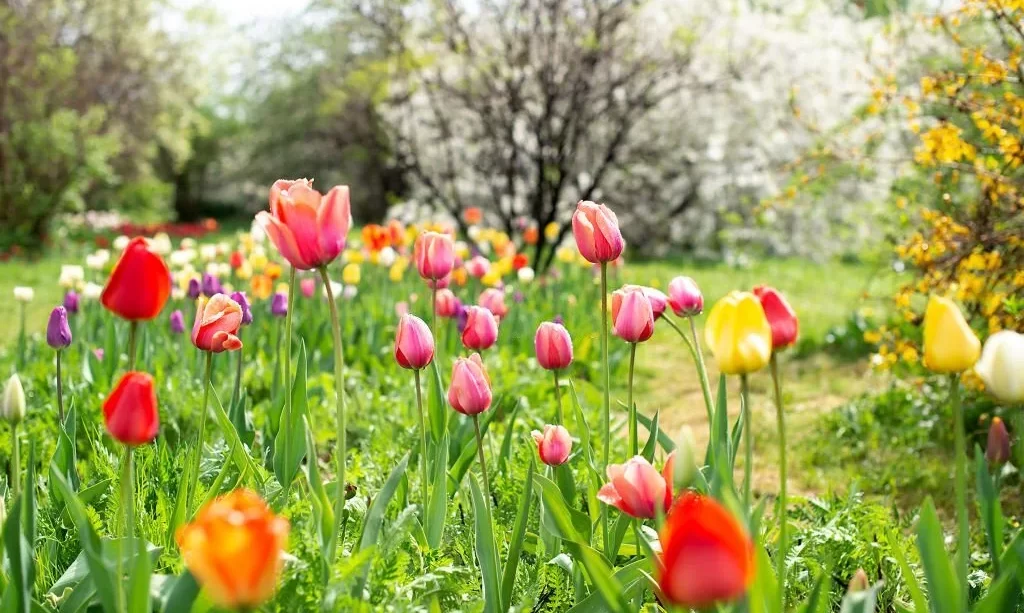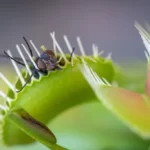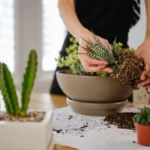Tulips, with their enchanting array of colors and graceful blooms, are cherished by gardeners and flower enthusiasts worldwide. These exquisite flowers bring a burst of life and vibrancy to gardens and landscapes. However, the allure of tulips extends beyond humans, and in the natural world, these delicate beauties can become an enticing delicacy for a variety of creatures. While we admire tulips for their elegance and charm, other animals and pests view them as a delectable treat.
In this guide, we’ll delve into the world of tulip-eating creatures and explore the common animals that have a penchant for munching on these floral wonders. Understanding the culprits behind tulip damage is the first step in preserving the beauty of your tulip garden.
- For year round control of deer, rabbits, elk, moose, hares, voles, squirrels, chipmunks and other herbivores
- Protects approximately 1,750 square feet. Granules inside jug will vary in size, see note in product description for more detail.
- Application frequency: Active growing season (6-8 weeks), Dormant Season (apply at start of dormant season and again before snow fall).
- 100% Dried Blood (Porcine and/or Bovine). No animals parts are used.
- OMRI listed (Organic Materials Review Institute) for Organic Use. Made in the USA.
Common Tulip-Eating Animals
Tulips may stand as a symbol of spring’s arrival and a testament to nature’s beauty, but they often find themselves on the menu for certain wildlife. Here, we’ll introduce you to some of the most common tulip-eating animals and discuss how they can impact your tulip garden:
- Deer:
- Deer are notorious for their fondness for tulips. They find the tender foliage and blossoms of tulips irresistible.
- Damage caused by deer includes chewed leaves and decapitated blooms, leaving a once-flourishing tulip garden looking ravaged.
- Rabbits:
- Rabbits are notorious nibblers and have a particular liking for tulip shoots.
- Signs of rabbit damage on tulips include neatly clipped stems and missing flower buds.
- Squirrels:
- Squirrels are agile and persistent creatures that may dig up tulip bulbs in search of a snack.
- They can also nibble on tulip flowers and leaves, leaving behind scattered petals.
Understanding the appetites and behaviors of these common tulip-eating animals is essential for developing strategies to protect your tulip garden.
Protecting Tulips from Wildlife
While common tulip-eating animals like deer, rabbits, and squirrels can pose a threat to your tulip garden, there are several strategies and preventive measures you can employ to safeguard your tulips from wildlife:
- Fencing: Erecting a sturdy fence around your tulip garden is one of the most effective ways to keep deer and rabbits at bay. Ensure that the fence is tall enough and buried underground to deter digging.
- Netting: Use garden netting or mesh to cover your tulip bed. This barrier can prevent squirrels and birds from accessing your tulips while allowing sunlight and rain to nourish your plants.
- Repellents: Various commercial repellents are available to deter animals from feasting on your tulips. These products emit scents or tastes that animals find unpleasant. Apply them according to the manufacturer’s instructions.
- Container Planting: Consider planting tulips in containers rather than directly in the ground. This method can be especially effective for protecting your tulips from digging animals like squirrels.
- Companion Planting: Plant tulips alongside other flowers and herbs that repel or discourage animal pests. Marigolds and daffodils, for example, can deter some animals with their scent and taste.
- Ultrasonic Devices: Some gardeners use ultrasonic devices that emit high-frequency sounds to deter wildlife. These devices can be effective for deterring squirrels and other small animals.
- STYLE & ELEGANCE: GrayBunny landscaping border fence is a versatile fencing solution that makes a charming addition to your garden. This metal fence comes in a simple yet tasteful style which adds elegance to your garden or walkway. It helps to define and protect your garden, paths and landscapes. A great option to make a landscape border around a tree, a plant bed, lawn, etc and also a barrier for dogs and animals.
- FLEXIBLE & EASY TO USE: GrayBunny black 7 panel per set rust-free metal garden fence is easy to assemble. Just push into the ground to install. No tools or soil digging required. This garden fence is foldable and adjustable so that it is flexible to arrange in different shapes. Panel side rings allow you to easily interlock the panels. This moveable garden fence can fold flat for easy storage and is ideal for transporting.
- PREMIUM QUALITY: GrayBunny classic black garden fences are high quality, durable and sturdy metal fences. One set of GrayBunny garden fence includes seven 17×13 inches black powder coated iron panels. 7.6 feet in length total. Rust resistant and durable – will last for years to come. Designed to link together for a continuous look and can easily be set up in a straight line or on a curved path or around a tree – great for several of your garden needs.
- 1-year warranty – We are so confident you’ll love the products that we give a 1-year warranty on the purchase. If, for some reason you are not happy with your order, reach out to us and we will gladly assist you.
Other Threats to Tulips
While wildlife is a common threat to tulips, other factors can also affect the health and beauty of your tulip garden. Here are some additional threats to be aware of:
- Insects: Aphids, spider mites, and bulb-feeding nematodes are among the insects that can damage tulip plants. Look for signs of insect infestations, such as distorted leaves or wilting.
- Diseases: Tulips can be susceptible to fungal diseases like botrytis and downy mildew. These diseases can cause spotting, wilting, or discoloration of tulip foliage and flowers.
- Human Impact: Garden practices and human activity can inadvertently harm tulips. Avoid trampling on tulip beds, and be mindful of where you place heavy objects or equipment in your garden to prevent damage.
- Improper Planting Depth: Planting tulip bulbs too shallow or too deep can affect their growth and blooming. Follow recommended planting guidelines to ensure your tulips thrive.
- Soil Quality: Poor soil quality can lead to nutrient deficiencies or drainage issues. Amending the soil with organic matter can help improve tulip health.
By being vigilant about these potential threats and taking proactive measures to protect your tulips, you can ensure that your garden continues to flourish with the vibrant beauty of these beloved flowers.
Human Impact
While we may admire tulips for their beauty, we, as humans, can unintentionally impact these delicate flowers in various ways. Being mindful of our actions in the garden can help reduce human-related harm to tulips:
- Trampling: Avoid walking or standing on tulip beds, as this can damage the bulbs and delicate foliage. Create clear pathways and use stepping stones to minimize contact with the planting area.
- Heavy Objects: Placing heavy objects or equipment on or near tulip beds can compress the soil, affecting bulb growth and root development. Be cautious when positioning items in your garden to prevent unintended damage.
- Planting Depth: Incorrect planting depth can hinder tulip growth. Follow recommended guidelines for planting tulip bulbs at the appropriate depth to ensure healthy root development and vibrant blooms.
- Weed Control: Be cautious when using herbicides or weed control methods near tulip beds. Accidental exposure to these chemicals can harm your tulips. Consider manual weeding to protect your flowers.
- Garden Tools: Exercise care when using garden tools near tulip plants. Shovels, rakes, and hoes can accidentally damage bulbs and surrounding foliage if not used with caution.
By being aware of these potential human impacts on tulips and taking steps to minimize them, you can help preserve the beauty and health of your tulip garden.
Conclusion
In conclusion, tulips are a cherished symbol of beauty and renewal, adorning gardens with their vibrant colors and elegant blossoms. However, these alluring flowers often find themselves vulnerable to a range of threats, from wildlife and insects to diseases and human actions.
Understanding the common animals that eat tulips, such as deer, rabbits, and squirrels, and implementing protective measures can help ensure that your tulip garden remains a source of joy and inspiration. Additionally, being aware of other potential threats like insects, diseases, and human impact allows you to take proactive steps to preserve your tulips’ health and vitality.
As you tend to your tulip garden, remember that with the right care and vigilance, you can continue to enjoy the timeless beauty of these beloved flowers for years to come. May your garden always be adorned with the stunning hues of tulips, welcoming each new season with grace and elegance.






